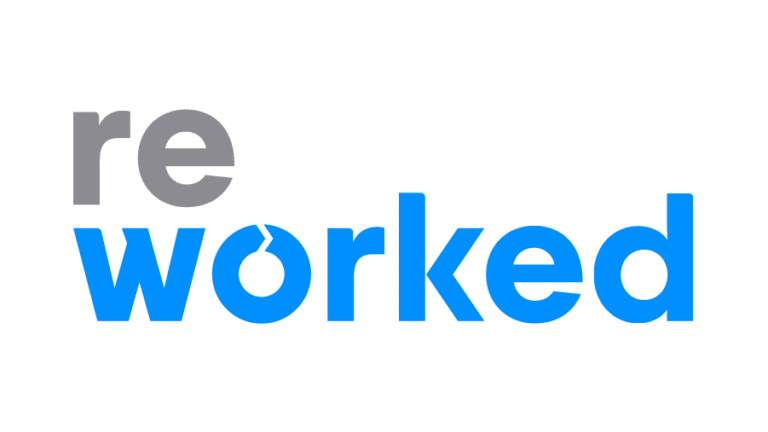Your frontline isn’t ignoring you. They’re waiting on their manager.
Amidst mounting cost pressure and AI-driven restructuring, organizations are saying goodbye to middle managers. In the wake of these cuts, the responsibilities of internal communication now fall solely to direct managers—and they’re quickly buckling under the added weight.
Direct managers are the first-in-line managers above non-managerial employees. With middle managers increasingly out of the picture, these leaders are now being asked to carry more responsibilities, manage bigger teams, and communicate critical company information without the support system they’re used to relying on.
The result is information gaps, added stress, and a frontline workforce that is disconnected, confused, and disengaged. In fact, Gallup reports that U.S. employee engagement dropped to 30% in 2024. That’s the lowest it’s been in more than a decade.
This post unpacks the disappearing role of middle management, explains why direct managers are now the make-or-break link in your communication strategy, and outlines six ways senior leadership can step up to support them, and by extension, the entire organization.
Corporate America says goodbye to middle managers
The middle manager, once a mainstay in corporate America, is fast becoming a marker of yesteryear.
At the end of 2024, U.S. employers were advertising 42% fewer middle management positions than at the start of 2022. Between May 2022 and May 2025, the number of managers in U.S. public companies dropped by 6%. And in a recent survey from Korn Ferry, a whopping 44% of U.S. employees report their companies have laid off management positions.
The aftermath is significant-—and widespread, touching frontline workers, direct managers, and even senior leadership. Per the same Korn Ferry survey, nearly three in four (72%) of senior executives “feel stressed and stretched beyond their abilities” as their companies lay off middle management.
But who’s feeling the brunt of it all? Direct managers, i.e., the first level of managers above non-managerial employees.
Without middle managers to translate strategy and carry communication downstream, the full responsibility of internal communications is now on direct managers—and the consequences are felt across the entire organization..
Middle managers: the former bridge between senior leadership and direct managers
Despite persistent workplace tropes, middle managers do more than just push paper.
Instead, they occupy a crucial position between senior leadership and direct managers, serving as translators who turn high-level company goals and messages into actionable information.
In this way, middle managers act as communication multipliers.
While executives focus on high-level strategy and direct managers stay close to frontline realities, middle managers bridge the two. They understand both big-picture, organizational imperatives and the daily demands of frontline managers, making them uniquely suited to turn top-down initiatives into practical, relevant guidance that direct managers can use to drive alignment and execution on the ground.
The outsized role direct managers play in the employee experience
One step below middle managers, direct managers sit closest to frontline employees, where they significantly shape the employee experience. This influence extends across several critical areas, as revealed in the First Manager Impact Survey, including:
- Information flow: Sixty-nine percent of employees rely on their direct manager for important company updates. What’s more, 51% call their direct manager their most trusted source of information regarding company matters.
- Clarity and context: When employees need direction or explanation, they turn to their direct manager. In fact, 86% of them depend on direct managers to translate company updates into what it means for their role, while half (53%) say they go to their direct manager first for work-related questions.
- Trust and connection: Beyond information-sharing, direct managers build the everyday trust and connection frontline employees depend on. Seventy-three percent of employees rely on their direct manager for recognition and appreciation, and 61% are likely to turn to their direct manager for support when disengaged or uncertain. In contrast, just 10% say they rely on senior leadership for building trust and connection within their team.
- Growth and development: Direct managers are also employees’ most immediate source of growth. Three in four (72%) turn to direct managers for feedback, goal-setting, and prioritization. Without them, 29% say they would experience decreased access to mentorship and career development support.
Frontline workers, who don’t always have ready access to a computer or email, are even more dependent on direct managers for critical information, guidance, and company updates. Without clear communication and support from their direct managers, these employees are at higher risk of disengaging and missing key information they need to perform their best.
Without middle managers, direct managers carry the weight alone
As the middle management layer thins out, direct managers are left carrying more weight—and when they feel burdened, the strain extends to the entire frontline workforce.
- More responsibilities: In the wake of middle management layoffs, direct managers are now being asked to assume their former superiors’ responsibilities. This means they have more work to inform, engage, and support the entire frontline workforce. According to a report from Gusto, “people managers now oversee about twice as many workers as just five years ago.”
- Less support: At the same time, the support systems direct managers are used to leaning on are disappearing. Now without middle managers, direct managers lose partners for strategic alignment, communication, and planning and are left to bridge the gap between senior leadership and frontline employees, all on their own.
- Limited capacity: More responsibilities and less work means direct managers have less time to support their teams. Per the Firstup Manager Impact Survey, 38% of employees have noticed their direct manager is less available since their organization’s layoffs, and only half (56%) say they are “somewhat” confident in getting the information they need without their direct manager.
- Operational risks: With the link between senior leadership and direct managers broken, communication across the organization breaks down—with rippling business setbacks. Consider: 44% of project failures are tied to poor communication, and nearly one in five lost sales comes down to a breakdown in communication.
6 ways to support direct managers now that middle managers are gone
Of course, we’re also always fine-tuning the everyday experience. From cleaner notifications to smarter search, Q3 includes Direct managers bear the critical responsibility of carrying the day-to-day weight of the employee experience: informing, coaching, motivating, and translating strategy into action. But with the middle management layer shrinking, direct managers have lost their own crucial support system. At the same time, they’re being asked to take on more responsibilities and oversee more people—all with less time and fewer resources.
This is a critical moment for senior leadership to step in and support direct managers with the tools, training, and structures they need to stay connected, build trust, and drive employment engagement and performance.
These six actions can help senior leadership support direct managers to communicate effectively, foster trust, and drive meaningful connection and performance across your workforce.
Give direct managers the support to lead with confidence
More than a third (36%) of managers say they’re not sufficiently prepared to manage people, per Deloitte’s 2025 Global Human Capital Trends. This leaves them uncertain, unconfident, and inconsistent in how they lead. Down the line, this lack of preparation risks sowing confusion, disengagement, and turnover throughout the frontline workforce.
By giving direct managers the tools to coach, support, and develop their frontline teams, senior leadership can help close communication gaps and nurture direct managers’ confidence to drive clarity, connection, and performance.
For example, provide templates and frameworks that help direct managers deliver feedback and guide priorities. These resources can be especially helpful in supporting frontline workers who don’t always have the time to read long announcements, giving direct managers a structured, efficient way to connect big-picture goals to day-to-day work.
Provide ready-to-use communication toolkits
With their middle management support system shrinking, direct managers are increasingly underwater when it comes to time, energy, and resources—so don’t expect them to start all communication materials from scratch. Instead, equip them with a practical toolkit they can use to lead meetings, deliver updates, or handle tough conversations, such as:
- Messaging briefs and talking points
- Weekly team huddle and 1:1 meeting templates
- Crisis checklists and escalation protocols
- Digital vs. face-to-face delivery guides
- Active listening frameworks and discussion facilitation cards
- FAQs and feedback loop systems for employees without regular device access
With a resource library to cover every common scenario, direct managers can spend less time second-guessing and more time leading, connecting, and reinforcing key messages.
Invest in ongoing coaching, training, and support
To succeed as direct managers—and lead, communicate, and drive connection for the entire organization—your team needs ongoing training, mentorship, and support that builds skills and reinforces confidence. But 40% of managers say their organization didn’t give them enough training, and 58% of employees agree their manager would benefit from more skills training, per Unmind’s Closing the Leadership Skills Gap report.
To close this gap and build direct managers’ skills and confidence, leadership should prioritize structured development and give direct managers access to:
- Regular skill development planning
- Senior leader mentorship and peer coaching
- Subject matter expert access
- Advanced communication courses and pathways
By investing in your direct managers’ communication capabilities and their leadership journeys, you also strengthen team alignment, increase engagement, and build an overall more connected workforce.
Set up KPIs to track impact and drive accountability
Communication is a leadership skill that improves with practice—and the best way to support improvements is to measure.
To drive progress and build accountability, create clear, role-specific KPIs for direct manager communication efforts that link directly to business and employee outcomes, such as:
- Employee satisfaction with manager communication
- Team engagement scores
- Message open rates or reach on internal channels
- Participation in team check-ins or huddles
Clear expectations remove ambiguity and give direct managers a framework to track progress and refine their approach over time.
Build feedback loops that work
Unlike top-down communication models where information flows in a one-way stream, direct managers can both share and collect insights—and the value goes both ways. Leadership can stay connected to what’s happening on the ground; meanwhile, for employees, regular feedback and upward visibility can increase trust, boost morale, and improve confidence in leadership.
Senior leadership can make this process easier by giving direct managers simple, structured ways to capture and escalate feedback. For example, tools and processes to gather input on message clarity, policy understanding, or operational blockers can help direct managers spot patterns, adjust communication, and close gaps before they turn into bigger issues.
Remove admin clutter to make room for more meaningful work
In the wake of middle management layoffs, direct managers are stretched thin, juggling people, platforms, and priorities. Worse, the constant pull of administrative work leaves them with little time to lead or meaningfully connect with employees.
The strain is obvious:
- Managers spend nearly 40% of their days dealing with last-minute problems or completing administrative work
- 53% of managers say they’re burnt out at work
- 40% of employees say they don’t get enough coaching from their manager
Short on time and support, direct managers need leadership to step in and reduce the administrative noise so they can refocus their energy on what matters most: people.
Firstup Journeys enables organizations to personalize employee experiences with journey automation, transforming one-size-fits-all messaging into personalized communications that seamlessly move each employee from awareness to action with speed and precision. By streamlining touchpoints and eliminating repetitive tasks, Firstup makes it easier for direct managers to focus on what they do best: connecting with teams to build trust and foster engagement.
Final thought: Direct managers need support to keep critical information flowing
If your frontline is ignoring you, the problem isn’t the message—it’s the overworked, undersupported messenger who needs better resources.
Direct managers play an outsized role in informing, connecting, and engaging frontline employees. But as their own middle management support system vanishes due to layoffs and restructuring, direct managers are left overextended and underresourced. This causes a ripple effect throughout the frontline workforce, creating confusion, weakening engagement, and threatening operational risks that disrupt execution across your organization.
Download PDF









